#martin lasalle
Explore tagged Tumblr posts
Text


Robert Bresson - Pickpocket (1959)
Jia Zhangke - Pickpocket (1997)
56 notes
·
View notes
Text


15 notes
·
View notes
Text
'You are not in the real world. You are not interested in anything that interests others. - Jeanne, do you believe that we will be judged?' (Marika Green, Robert Bresson)


JEANNE “You are not in the real world. You are not interested in anything that interests others.”
MICHEL “Jeanne, do you believe that we will be judged?”



Robert Bresson, Pickpocket Marika Green: Jeanne Martin LaSalle: Michel
"Vous n'êtes pas dans la vie réelle. Vous ne vous intéressez à rien de ce qui intéresse les autres."
"Jeanne, est-ce que vous croyez, vous, que nous serons jugés ?"

#art#cinema#robert bresson#movies#bresson#film director#portrait#bible#actress#photography#goddess#marika green#jesus#real world#the judgement day#redemption#book of revelation#god#classic movies#actor#pickpocket#martin lasalle
3 notes
·
View notes
Text
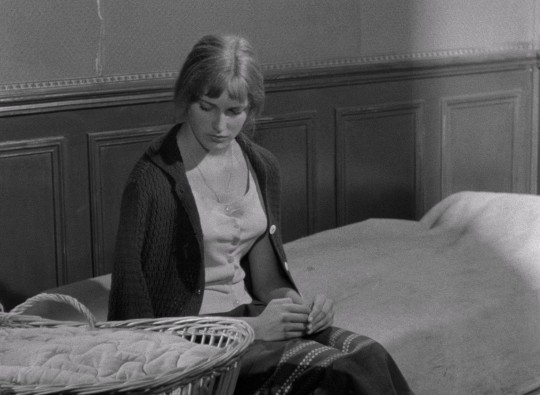
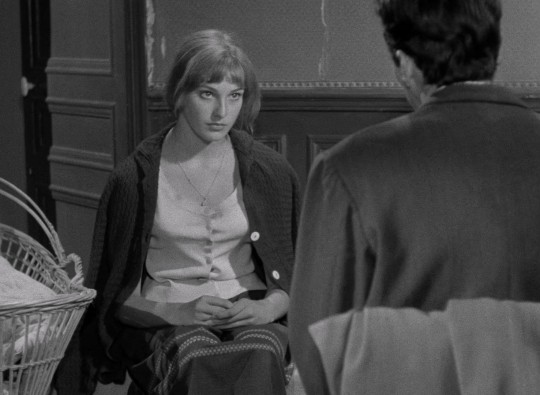
6 notes
·
View notes
Text
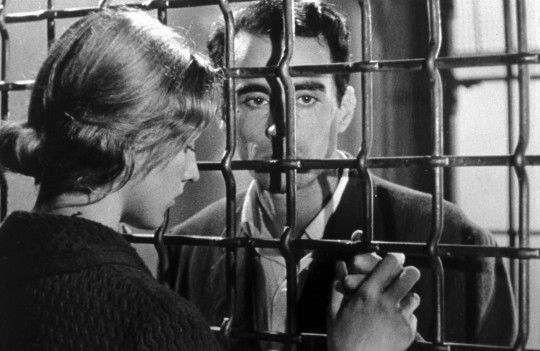
Marika Green and Martin LaSalle in Pickpocket (Robert Bresson, 1959)
Cast: Martin LaSalle, Marika Green, Jean Pélégri, Dolly Scal, Pierre Leymarie, Kassagi, Pierre Étaix, César Gattegno. Screenplay: Robert Bresson. Cinematography: Léonce-Henry Burel. Production design: Pierre Charbonnier. Film editing: Raymond Lamy.
As usual, Robert Bresson casts an unknown actor in the central role of his film Pickpocket. Martin LaSalle, as Michel, the titular thief, has the haunted look of the young Henry Fonda or Montgomery Clift -- a look, incidentally, that Alfred Hitchcock used to great effect when he featured those actors in two of his lesser-known films, Fonda in The Wrong Man (1956) and Clift in I Confess (1953). Pickpocket also contains a justly celebrated sequence demonstrating the thieves at work, a showcase for the work of Bresson's editor, Raymond Lamy. I think my mild dissatisfaction with the film lies in Bresson's imposing his material on the structure of Dostoevsky's Crime and Punishment. Like Raskolnikov, Michel lives in a cramped little garret room, meditates on the potential for a man of superior intellect to move beyond good and evil, commits a crime (though picking pockets is a good deal less evil than murdering an old woman) from which he refuses to benefit materially, gets caught, and is redeemed by his love for a "fallen woman," Jeanne (Marika Green), the film's equivalent to Dostoevsky's Sonya. The effect of all this is to make me wish that Bresson had simply decided to film Crime and Punishment. Lurking in the background as well are the existentialist novels of Camus and Sartre, which were much in vogue at the time.
2 notes
·
View notes
Text
Dr. Tarr's Torture Dungeon (1973)

While I didn't enjoy this film, that doesn't mean you won't. No matter what I say, the people involved in this project did it: they actually made a movie. That's something to be applauded. With that established...
Anyone who sits down and excitedly wonders what horrors await inside Dr. Tarr’s Torture Dungeon will be disappointed. The alternate title of The Mansion of Madness is far more suitable and more properly sets you up for a film that remains lackluster regardless of what you call it. This movie’s plot is too obvious and too badly written for you to care what happens in the end.
Reporter Gaston LeBlanc (Arthur Hansel) is writing an article about famed psychologist Dr. Maillard (Claudio Brook). Arriving at Maillard's asylum, LeBlanc finds the doctor’s methods unorthodox to say the least. Captivated by the beautiul Eugénie (Ellen Sherman), LeBlanc fails to realize the inmates are in charge of the facility.
Loosely based on Edgar Allan Poe's darkly comedic The System of Doctor Tarr and Professor Fether, the film has a good premise. Imagine visiting a place only to discover that the patients have taken over. You're surrounded by madmen and can't escape. That's scary. To make it work, you need two things. First, a slow-boil plot. If everyone comes out of the gates raving like lunatics, you’ll figure out the whole thing immediately. Second, you need an intelligent protagonist. If you want to make the audience laugh, they should be dumb but if your goal is to scare, Gaston needs to be sharp. Once the deception is revealed, he needs to fake his way through this ordeal and exploit every means of escape possible. That’s what the audience will be doing mentally. Unfortunately, director Juan López Moctezuma fails to do either.
The Mansion of Madness a.k.a. House of Madness a.k.a. Dr. Tarr's Torture Dungeon does nothing clever or new with its concept. As Gaston approaches the sanitarium, the friends traveling with him suddenly have to cut their journey short. Obviously. If they stuck around, they'd reveal that the man in charge of the asylum isn't Dr. Maillard at all. They're useless until captured by the lunatics. At this point, they become worse than useless and star in a subplot that has no impact on the main story, whatsoever. They prove that all of the sane people in this movie are complete idiots. At one point, one of them escapes. The man’s all tied up and hopping around in the middle of the forest, trying to elude the insane rapists who roam the grounds surrounding the mental institution. He should look for a way to untie himself. Instead, he screams for help, practically begging to be recaptured. Here's a free lesson for all the screenwriters out there: audiences want to see a part of themselves in the on-screen characters. Having them behave like they have no sense of self-preservation is a surefire way to make everyone hate your movie.
That subplot is ultimately nothing more than padding and it’s not the only example of director Juan López Moctezuma struggling to find a way to make his movie feature-length. At one point, Eugénie and Gaston become romantically involved. So involved they profess their love to each other. They’ve exchanged fewer than 5 lines of dialogue. It’s ludicrous and another reason for you to dismiss the movie entirely. It doesn't stop there: unnecessary bits of backstory, garish opening credits, unbelievable behavior from our heroes, mountains of coincidences, and so on and so forth. Dr. Tarr's Torture Dungeon is a complete misstep any way you look at it. (English version, January 15, 2021)

#Dr. Tarr's Torture Dungeon#The Mansion of Madness#House of Madness#Juan Lopez Moctezuma#Carlos Illescas#Gabriel Weisz#Claudio Brook#Arthur Hansel#Ellen Sherman#Martin laSalle#1973 movies#1973 films
1 note
·
View note
Text
"Dugin merece crédito por ter levado para a Rússia, ou melhor, para a cultura acadêmica e popular russa, autores profundamente ocidentais e considerados 'indesejáveis' pelo então regime soviético nos anos anteriores, pensadores de vários tipos que se tornaram pontos de referência para ele em sua formação filosófica e política: da Alemanha, Friedrich Nietzsche, Martin Heidegger, Carl Schmitt, Gottlieb Fichte, Friedrich Hegel, Ferdinand Lasalle, Ernst Jünger, Ernst Niekisch, Oswald Spengler; do Reino Unido, Halford Mackinder; da França, Pierre-Joseph Proudhon, Alain De Benoist, Georges Sorel, Marcel Mauss, Serge Letouche, Roger Garaudy, Christian Jambet, Jean-Claude Michéa, René Guenon; do Brasil, Darcy Ribeiro; da Romênia, Mircea Eliade; da Itália, Nicola Bombacci, Antonio Gramsci, Curzio Malaparte, Julius Evola, Costanzo Preve, Massimo Cacciari, Giorgio Agamben, Diego Fusaro. Essa lista ampla, embora incompleta, de pensadores das mais diversas épocas, geografias e orientações era quase estranha ao mundo russo da produção cultural devido ao filtro ideológico imposto pela União Soviética, deixando inacabado o trabalho de metabolização, interpretação e comparação que pertence a toda cultura, especialmente no mundo globalizado". - Lorenzo Maria Pacini (Dugin e Platão)
#Friedrich Nietzsche#Martin Heidegger#Carl Schmitt#Gottlieb Fichte#Friedrich Hegel#Ferdinand Lasalle#Ernst Jünger#Lorenzo Maria Pacini#Ernst Niekisch#Oswald Spengler#Halford Mackinder#Pierre-Joseph Proudhon#Alain De Benoist#Georges Sorel#Marcel Mauss#Serge Letouche#Roger Garaudy#Christian Jambet#Jean-Claude Michéa#René Guenon#Darcy Ribeiro#Mircea Eliade#Nicola Bombacci#Antonio Gramsci#Curzio Malaparte#Julius Evola#Costanzo Preve#Massimo Cacciari#Giorgio Agamben#Diego Fusaro
4 notes
·
View notes
Text

Those were the days: In 1975, Norman Lear created the character of Beverly LaSalle (played by San Francisco performer Lori Shannon, née Don Seymour McLean). Appearing in a trilogy of "All In The Family" episodes, Beverly proved to be a formidable foil to lovable bigot Archie Bunker (Carroll O'Connor) and a dear friend to his just-plain-lovable wife Edith (Jean Stapleton). In her final appearance in 1977, Beverly's senseless murder inspires a crisis of faith in Edith.
#mattachine#john cameron mitchell#amber martin#angela di carlo#julius' bar#nyc#dance party#hedwig#shortbus#paul dawson#all in the family#norman lear#carroll o'connor#jean stapleton#1975#1976#1977#trans#lori shannon#beverly lasalle#Archie bunker
0 notes
Photo



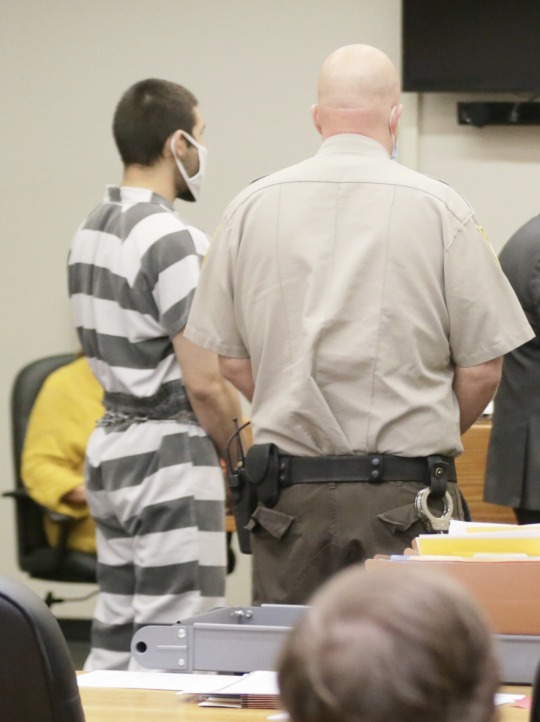



Post 0596
Michael S Swift, Illinois inmate Y52996, born 1991, incarceration intake in 2022 at age 30, scheduled for parole consideration 07/19/2095, with full release 07/19/2098
Murder, Solicitation to Murder
In July 2022, a Mokena, Illinois man accused of stabbing 21-year old Grace Taylor of Ottawa to death pleaded guilty. 30-year old Michael Swift was sentenced to 53-years in prison. LaSalle County State’s Attorney Todd Martin says Swift confessed to Ottawa Detective Sgt. Kyle Booras that he killed Taylor out of jealousy or anger. He says Swift entered Taylor’s south side Ottawa apartment through an unlocked door and stabbed her in her bedroom with a knife he owned. The knife was later found in a trash can at the apartment. Swift apologized to the family of Taylor who were in the courtroom before he was sentenced.
Martin also says a family member called 911 after Swift confessed that he killed Taylor to them. During a search of Swift’s apartment a box that held the knife that he used was found as well as Taylor’s bloody socks. Martin says he is very satisfied with the outcome because he was unsure if he would have gotten a better sentence if the case went to trial. Four other charges in the murder case were dropped.
In August 2022, Swift pleaded guilty to two counts of trying to hire a hit man to kill a LaSalle County Sheriff's Deputy and a LaSalle County judge.
As part of his plea, Swift was sentenced to 25 years in prison. He'll have to serve at least 85 percent of the sentence. His new 25 year sentence will be added to his existing 53 year sentence.
LaSalle County Deputy Ray Taylor was one of Swift's murder for hire victims and is the father of Grace Taylor. He says there is no "why" for what Swift did.
Deputy Ray Taylor and his wife Ann Taylor both gave victim impact statements in court just feet away from Swift and his public defender. Both said they had never heard of Swift before the murder of their daughter.
Kendall County Assistant State's Attorney Ryan Phelps says that while Swift was being held in the Kendall County Jail in Yorkville for the Ottawa murder case, he asked a fellow inmate about hiring someone to murder a judge and Deputy Taylor in September. The other inmate reported Swift to the Kendall County Sheriff's Office which began an investigation where an undercover officer posed as a hit man and spoke to Swift. Swift offered $15,000 to the fake hit man and wanted the murders to happen in the victim's homes.
Two additional murder-for-hire counts were dropped in the plea.
3u
Last reviewed October 2024
24 notes
·
View notes
Text
Wildfire, potential ammonia leak forces mandatory evacuation order in Bedford, N.S.
A wildfire is burning in the Hammonds Plains-area near Bedford, N.S.
An emergency alert was issued at approximately 6:40 p.m. Tuesday letting residents know a wildfire and potential ammonia leak has caused a mandatory evacuation order for resident of several streets in Bedford, N.S.
Residents in the following areas must evacuate:
Olive Street
Bernard Street
Estelle Street
Lewis Street
Farmers Dairy Lane
Giles
Bluewater Road
Topsaild
Command
Gary Martin
Lasalle
Casetlestone
People on Hammonds Plains Road from the Intersection of Giles to the intersection of Larry Utek Drive must also evacuate.
For more Nova Scotia news, visit our dedicated provincial page.
from CTV News - Atlantic https://ift.tt/b1OuKoi
5 notes
·
View notes
Text
'Jeanne, do you think we'll be judged?'





"Jeanne, est-ce que vous croyez, vous, que nous serons jugés ?"
Robert Bresson, Pickpocket
Marika Green, Martin LaSalle
#cinema#god#jesus#robert bresson#hell#actress#portrait#marika green#french cinema#jesus christ#the judgement day#pickpocket
0 notes
Text
The Butterbrawl
On Tuesday, November 19, 2024, my pinball team Butter Ballers “hosted” opposing team Danger Danger at Buttermilk Bar in South Slope, Brooklyn. The quotation marks are because both teams call Buttermilk home. When we play each other, we call it The Butterbrawl (or, sometimes, The Battle of the Butts), and it’s a party atmosphere. I love my team, and I’m pretty close to the members of Danger Danger, too; I was delighted to spend the evening with all of them. We had a few out-of-town teammates show up, even! Many of us were wearing one of our various Butter Ballers shirts designed by teammate Tim LaSalle—including Danger Danger captain Kaite Martin, a very sweet traditional of hers. I also had on my “BUTTS” socks.
Although Danger Danger is usually the higher-ranked team (as they were this season), we Ballers won the match—with some playoff implications. In the first round I got ahold of Metallica on ball 3 and got to put my initials in. Butter Baller captain Courtney Wetzel had a huge, 384 million-point game of Jaws in the fourth round to seal the deal.



0 notes
Text






4 notes
·
View notes
Text
Cast: Martin LaSalle, Marika Green, Jean Pélégri, Dolly Scal, Pierre Leymarie, Kassagi, Pierre Étaix, César Gattegno. Screenplay: Robert Bresson. Cinematography: Léonce-Henry Burel. Production design: Pierre Charbonnier. Film editing: Raymond Lamy.
As usual, Robert Bresson casts an unknown actor in the central role of his film Pickpocket. Martin LaSalle, as Michel, the titular thief, has the haunted look of the young Henry Fonda or Montgomery Clift -- a look, incidentally, that Alfred Hitchcock used to great effect when he featured those actors in two of his lesser-known films, Fonda in The Wrong Man (1956) and Clift in I Confess (1953). Pickpocket also contains a justly celebrated sequence demonstrating the thieves at work, a showcase for the work of Bresson's editor, Raymond Lamy. I think my mild dissatisfaction with the film lies in Bresson's imposing his material on the structure of Dostoevsky's Crime and Punishment. Like Raskolnikov, Michel lives in a cramped little garret room, meditates on the potential for a man of superior intellect to move beyond good and evil, commits a crime (though picking pockets is a good deal less evil than murdering an old woman) from which he refuses to benefit materially, gets caught, and is redeemed by his love for a "fallen woman," Jeanne (Marika Green), the film's equivalent to Dostoevsky's Sonya. The effect of all this is to make me wish that Bresson had simply decided to film Crime and Punishment. Lurking in the background as well are the existentialist novels of Camus and Sartre, which were much in vogue at the time.







Pickpocket (1959) dir. Robert Bresson
423 notes
·
View notes
Text

2 notes
·
View notes
Text
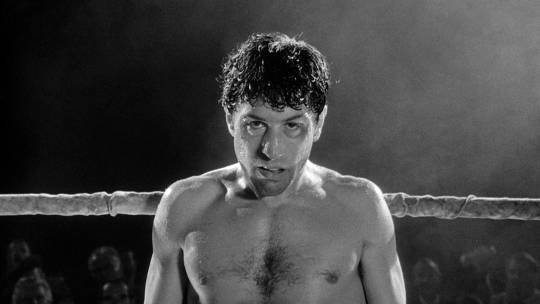
Robert De Niro in Raging Bull (Martin Scorsese, 1980)
Cast: Robert De Niro, Cathy Moriarty, Joe Pesci, Frank Vincent, Nicholas Colasanto, Theresa Saldano, Mario Gallo, Frank Adonis. Screenplay: Paul Schrader, Mardik Martin, based on a book by Jake LaMotta, Joseph Carter and Peter Savage. Cinematography: Michael Chapman. Film editing: Thelma Schoonmaker.
Lots of people think Raging Bull is a great film. The American Film Institute in 2007 ranked it No. 4 in its list of 100 best American movies, behind Citizen Kane (Orson Welles, 1941), The Godfather (Francis Ford Coppola, 1972), and Casablanca (Michael Curtiz, 1942). The 2022 Sight and Sound directors' poll of the greatest films of all time placed it at No. 22, in a tie with Mulholland Dr. (David Lynch, 2001), Pather Panchali (Satyajit Ray, 1955), and The Battle of Algiers (Gillo Pontecorvo, 1966). It is certainly an accomplished film: Michael Chapman's cinematography uses black and white in ways that hadn't been seen since color came to dominate filmmaking in the 1950s; Scorsese and his editor, Thelma Schoonmaker, accomplish wonders, especially with the fight sequences and the occasional eruptions of violence; the set decoration by Phil Abramson, Frederic C. Weiler, and Carl Biddiscombe evokes the shabby milieu and its changes over the decades convincingly; and the performances of then-unknowns Joe Pesci and Cathy Moriarty made them into overnight sensations. And then there's probably Robert De Niro's greatest performance, which won him a best actor Oscar. The film critic Mick LaSalle likes to categorize Oscar acting nominations as either "transformations" or "apotheoses." In the former, actors create new images for themselves, while in the latter, they simply take their existing images and raise them to newly vivid heights. But in Raging Bull De Niro does both: He transforms himself into both the self-destructive young boxer Jake LaMotta and the bloated older LaMotta, living on his long-ago laurels, but he also brings something new and more intense to the existing image of De Niro as a fiercely inward actor. For these reasons, I think, the film makes many lists of the greatest films of all time. So why does it leave me cold? Why, among the Scorsese and De Niro collaborations, do I prefer Mean Streets (1973), Taxi Driver (1976), and Goodfellas (1990)? Is it that Mean Streets is more varied and colorful, Taxi Driver more probing in its exploration of psychosis, and Goodfellas smarter and wittier? Could it be that Raging Bull lacks texture, depth, and humor? Is it that Jake LaMotta is one of the most unsympathetic figures to receive a biopic treatment, or that Scorsese was never able to find a multi-sided personality in the screenplays credited to Paul Schrader and Mardik Martin that were worked over by both Scorsese and De Niro? In another American Film Institute ranking, Raging Bull was proclaimed the best sports movie of all time. But Scorsese has said that he doesn't care for sports in general and boxing in particular, and I think it shows. His movie is about the brutality of boxing, not about the sport that involves both offense and defense, and requires not only a well-honed skill but also intelligence -- or if not that, at least a greatly developed cunning. There is nothing of that in his portrayal of LaMotta. The movie's reputation, therefore, remains something of an enigma to me.
5 notes
·
View notes